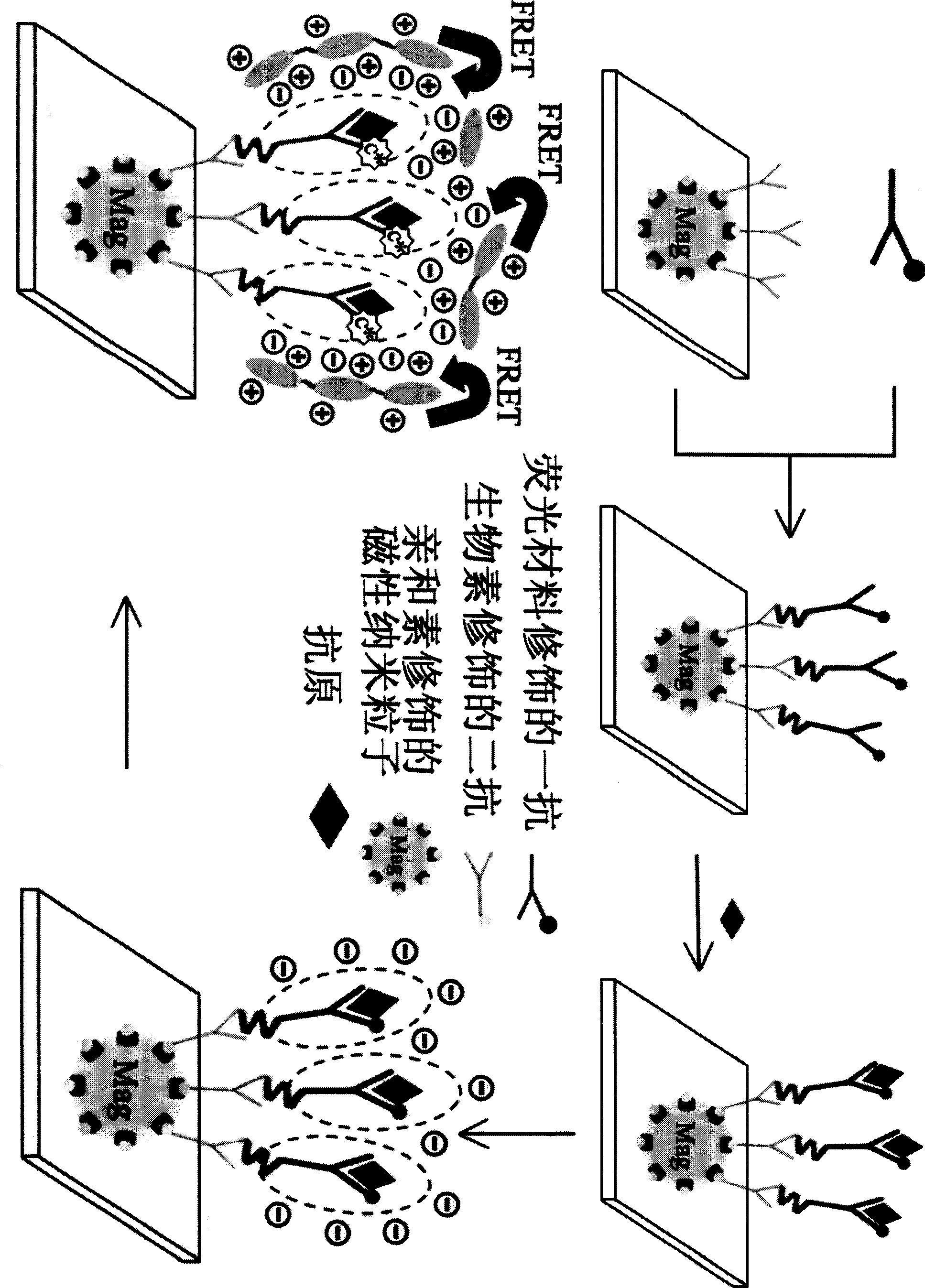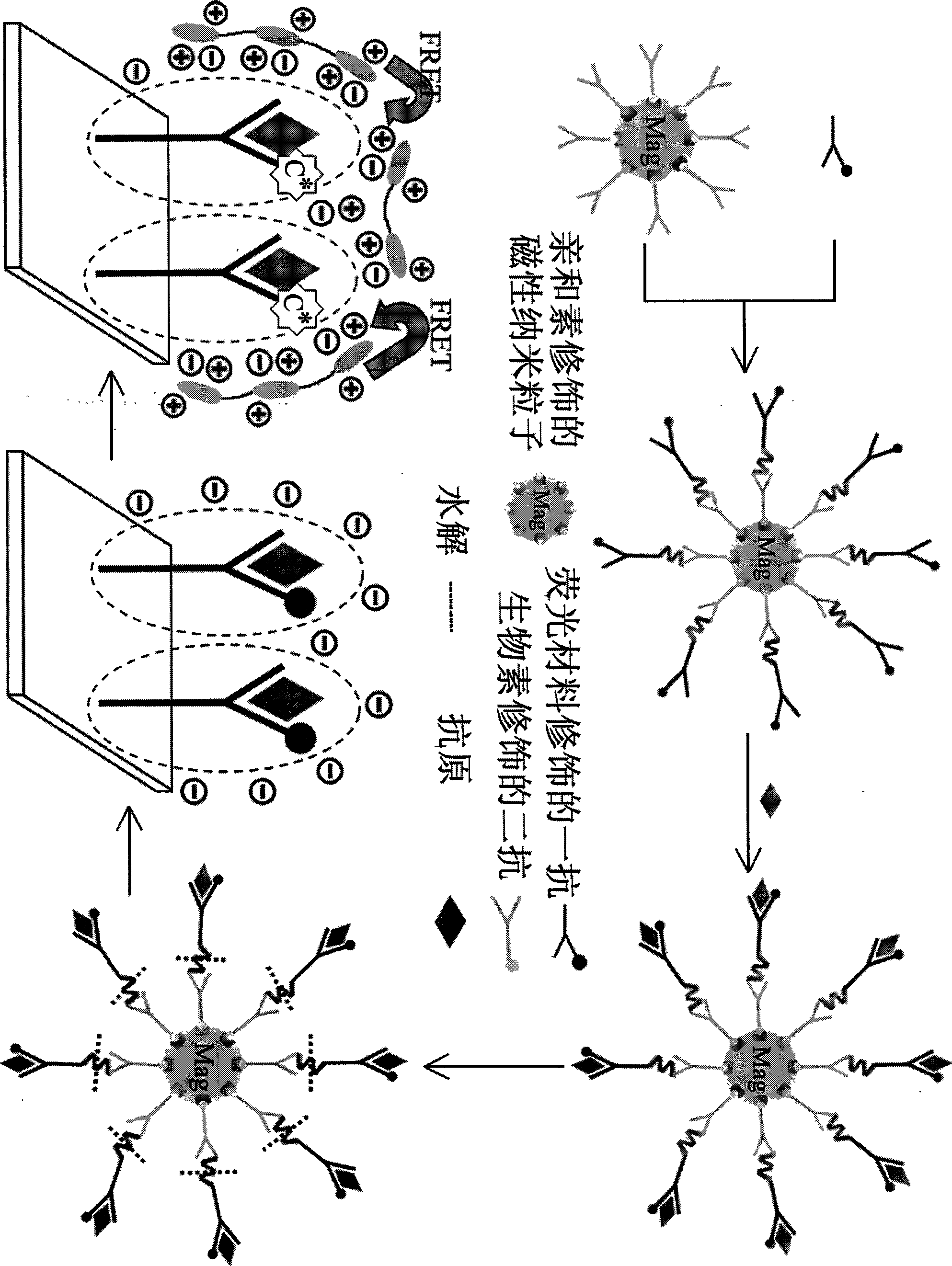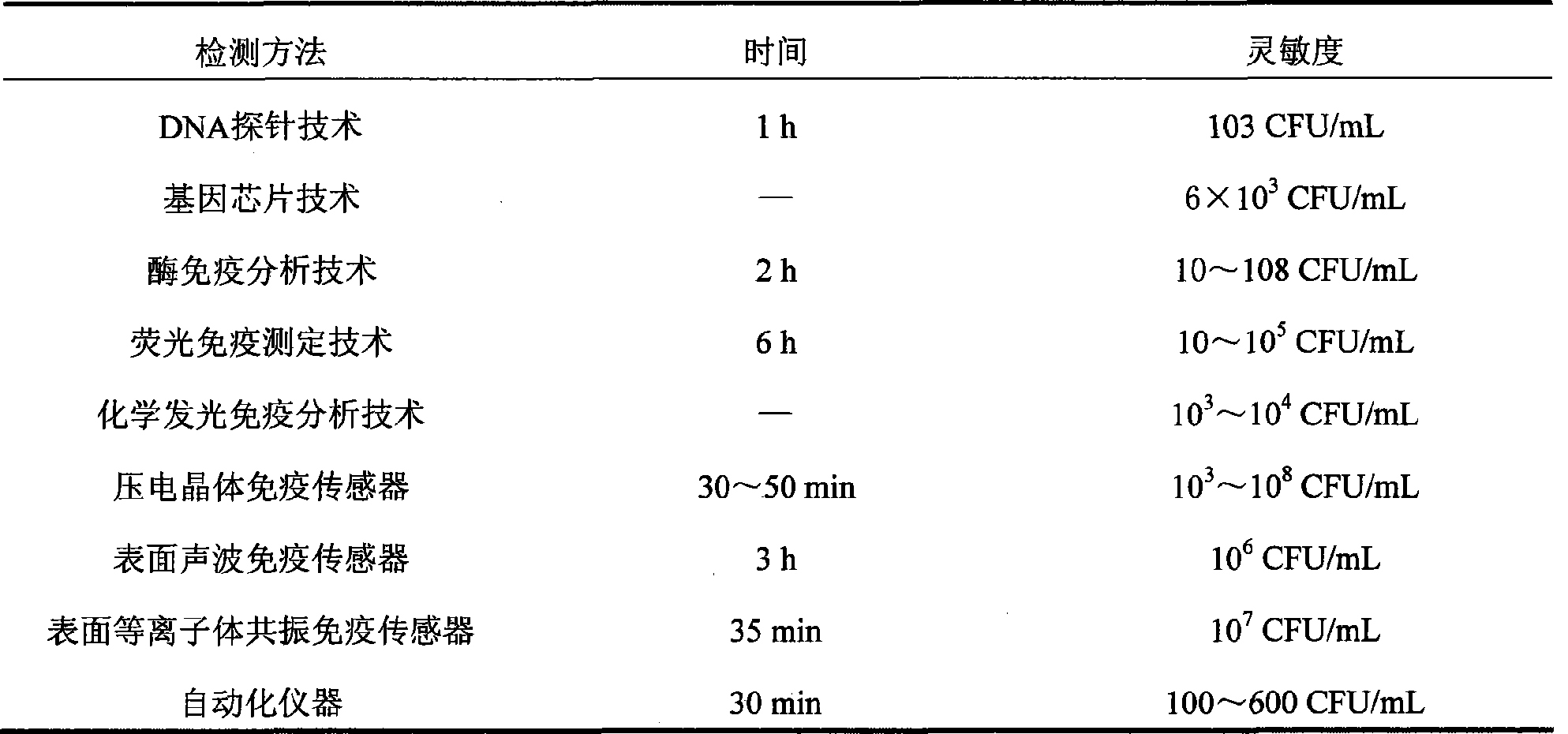Production method of novel fluorescent biosensor for bacillus coli detection
A biosensor, Escherichia coli technology, applied in the directions of fluorescence/phosphorescence, instruments, measuring devices, etc., can solve the problems of early diagnosis of unfavorable diseases, low detection limit, unfavorable promotion, etc., and achieve significant technological innovation significance and commercial value, and the method is simple , the effect of expanding the range
- Summary
- Abstract
- Description
- Claims
- Application Information
AI Technical Summary
Problems solved by technology
Method used
Image
Examples
Embodiment approach I
[0023] figure 1 It represents one of the preparation processes of the solid-phase microarray: the preparation method of the fluorescent biosensor microarray by the magnetic particle in situ method. The steps and principles are briefly described as follows: 1) The surface of the solid-phase microarrayed magnetic particles is modified with a secondary antibody, and the primary antibody is labeled with a fluorescent probe (such as fluorescein), and then the fluorescently labeled primary antibody and the secondary antibody are mixed. Combine to form an antibody complex; 2) use the prepared antibody complex to process the E. coli O157:H7 antigen sample to obtain a negatively charged E. coli O157:H7 antigen-antibody conjugate; 3) negatively charged antigen on the magnetic particles After the antibody conjugate is specifically combined with the cationic conjugated polyelectrolyte (CCP), a supramolecular recognition system is formed, and the light excitation of the CCP leads to resona...
Embodiment approach II
[0025] figure 2 It represents the second preparation process of the solid-phase microarray: the preparation method of the fluorescent biosensor microarray by the shear spotting method. The steps and principles are briefly explained as follows: 1) The surface of the magnetic particle is biofunctionalized to modify the secondary antibody, and the primary antibody is labeled with a fluorescent probe (such as fluorescein), and the labeled primary antibody binds to the secondary antibody to form an antibody complex; 2) Treat Escherichia coli O157:H7 antigen samples with antibody complexes, and then obtain negatively charged Escherichia coli O157:H7 antigen-antibody conjugates through shearing and magnetic separation processes; 3) Negatively charged Escherichia coli O157:H7 antigen-antibody conjugates After the conjugate is spotted and specifically combined with the cationic conjugated polyelectrolyte (CCP), a supramolecular recognition system microarray is formed, and the CCP ligh...
PUM
 Login to View More
Login to View More Abstract
Description
Claims
Application Information
 Login to View More
Login to View More - R&D
- Intellectual Property
- Life Sciences
- Materials
- Tech Scout
- Unparalleled Data Quality
- Higher Quality Content
- 60% Fewer Hallucinations
Browse by: Latest US Patents, China's latest patents, Technical Efficacy Thesaurus, Application Domain, Technology Topic, Popular Technical Reports.
© 2025 PatSnap. All rights reserved.Legal|Privacy policy|Modern Slavery Act Transparency Statement|Sitemap|About US| Contact US: help@patsnap.com



